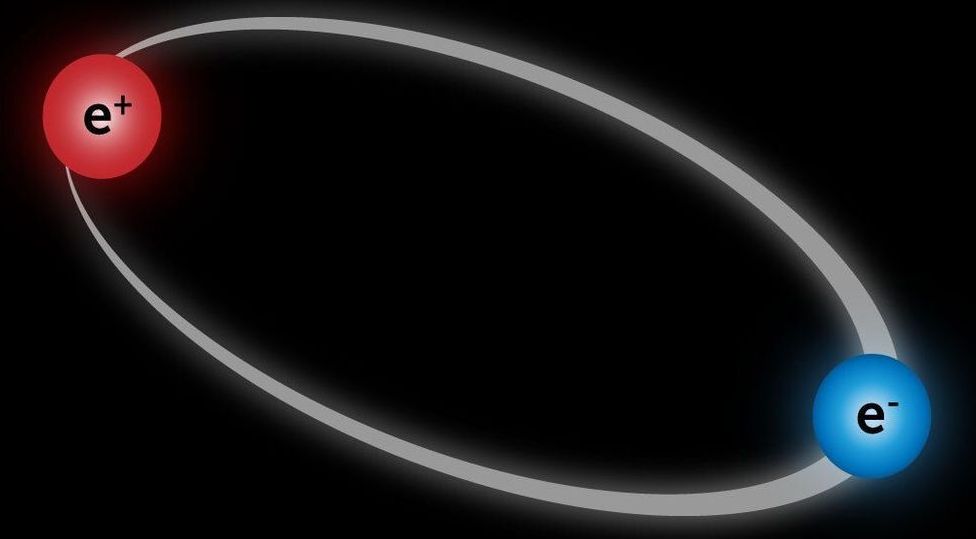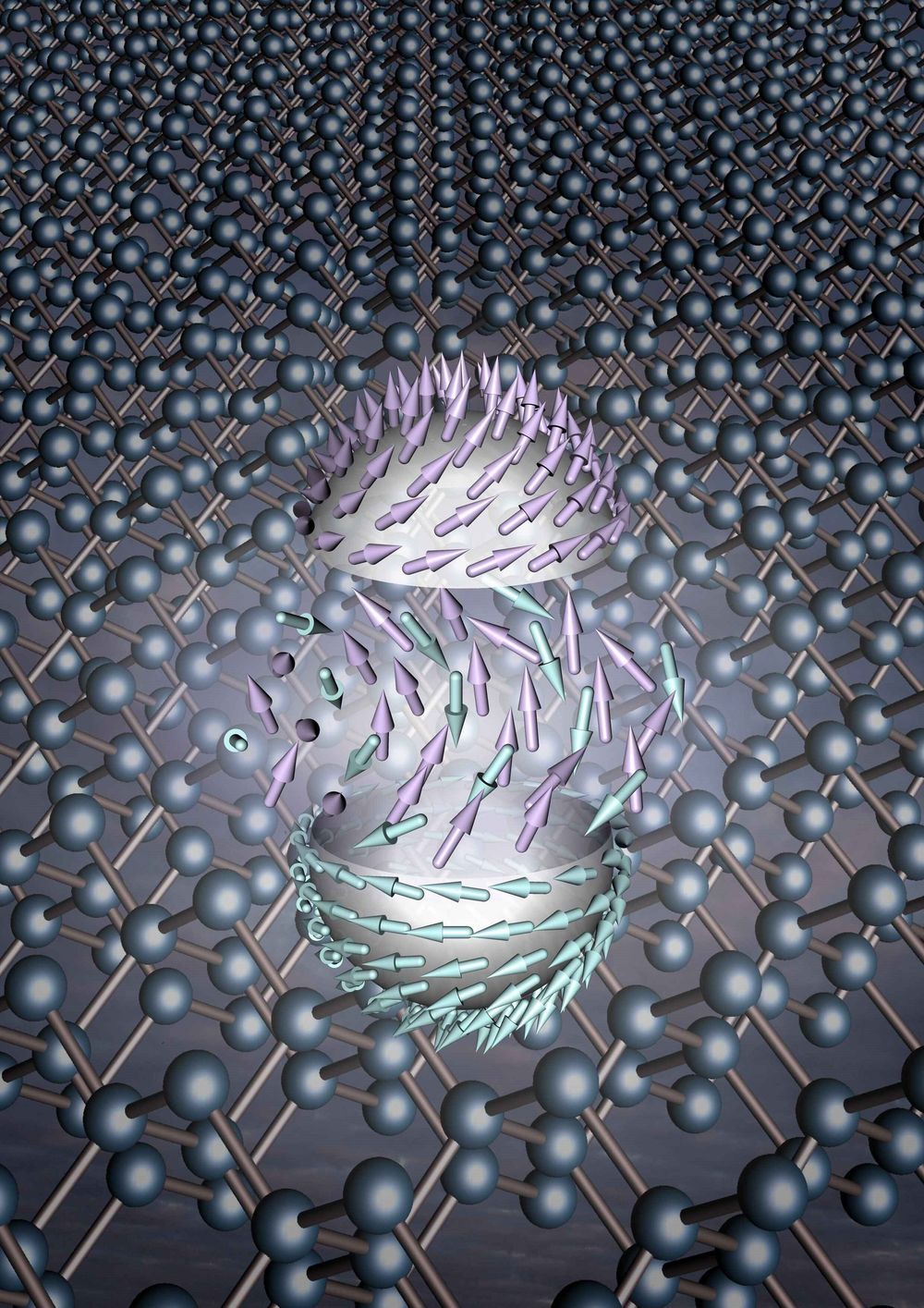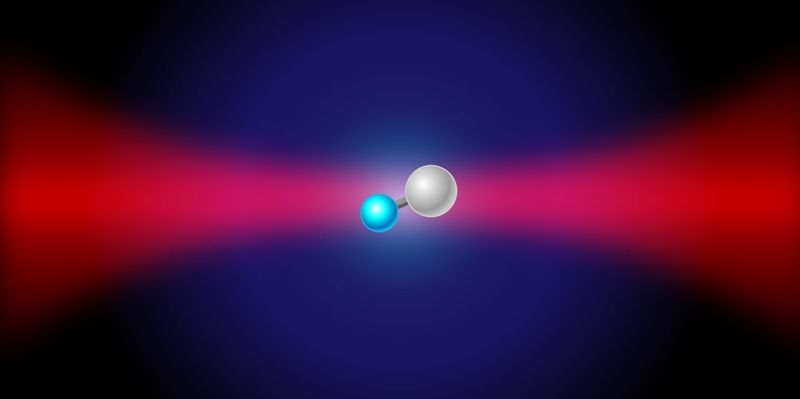O,.o.
New measurements of a weird but simple atom, one without a nucleus, suggest it may have unexpected properties. Scientists find this troubling.


O,.o.
Through a one-of-a-kind experiment at the Department of Energy’s Oak Ridge National Laboratory, nuclear physicists have precisely measured the weak interaction between protons and neutrons. The result quantifies the weak force theory as predicted by the Standard Model of Particle Physics.
The team’s weak force observation, detailed in Physical Review Letters, was measured through a precision experiment called n3He, or n-helium-3, that ran at ORNL’s Spallation Neutron Source, or SNS. Their finding yielded the smallest uncertainty of any comparable weak force measurement in the nucleus of an atom to date, which establishes an important benchmark.
The Standard Model describes the basic building blocks of matter in the universe and fundamental forces acting between them. Calculating and measuring the weak force between protons and neutrons is an extremely difficult task.

Nanoscale vortices known as skyrmions can be created in many magnetic materials. For the first time, researchers at PSI have managed to create and identify antiferromagnetic skyrmions with a unique property: critical elements inside them are arranged in opposing directions. Scientists have succeeded in visualizing this phenomenon using neutron scattering. Their discovery is a major step towards developing potential new applications, such as more efficient computers. The results of the research are published today in the journal Nature.
Whether a material is magnetic depends on the spins of its atoms. The best way to think of spins is as minute bar magnets. In a crystal structure where the atoms have fixed positions in a lattice, these spins can be arranged in criss-cross fashion or aligned all in parallel like the spears of a Roman legion, depending on the individual material and its state.
Under certain conditions it is possible to generate tiny vortices within the corps of spins. These are known as skyrmions. Scientists are particularly interested in skyrmions as a key component in future technologies, such as more efficient data storage and transfer. For example, they could be used as memory bits: a skyrmion could represent the digital one, and its absence a digital zero. As skyrmions are significantly smaller than the bits used in conventional storage media, data density is much higher and potentially also more energy efficient, while read and write operations would be faster as well. Skyrmions could therefore be useful both in classical data processing and in cutting-edge quantum computing.

Data from Southwest Research Institute-led instruments aboard ESA’s Rosetta spacecraft have helped reveal auroral emissions in the far ultraviolet around a comet for the first time.
At Earth, auroras are formed when charged particles from the Sun follow our planet’s magnetic field lines to the north and south poles. There, solar particles strike atoms and molecules in Earth’s atmosphere, creating shimmering curtains of colorful light in high-latitude skies. Similar phenomena have been seen at various planets and moons in our solar system and even around a distant star. SwRI’s instruments, the Alice far-ultraviolet (FUV) spectrograph and the Ion and Electron Sensor (IES), aided in detecting these novel phenomena at comet 67P/Churyumov-Gerasimenko (67P/C-G).
“Charged particles from the Sun streaming towards the comet in the solar wind interact with the gas surrounding the comet’s icy, dusty nucleus and create the auroras,” said SwRI Vice President Dr. Jim Burch who leads IES. “The IES instrument detected the electrons that caused the aurora.”

The following is adapted from Lewis’ The Rise: Creativity, the Gift of Failure, and the Search for Mastery, published by Simon & Schuster.
“It says, ‘No entrance,’ but you just enter,” physicist Andre Geim told me about the graphite mines in the mountains where he often hikes. His comment embodied the insouciance behind his Nobel Prize–winning physics experiment and his habit of experimenting deliberately outside of his area of expertise.
Geim, a Russian-born Dutch and British citizen and a professor at the University of Manchester, and his colleague Konstantin Novoselov won the 2010 Nobel Prize in physics for their experiments involving the single-atom-thick material called graphene—the thinnest, strongest, most conductive material in existence. It is predicted to replace silicon and transform the electronics industry as we know it.

It prevents galaxies from flying apart.
Two experiments hunting for a whisper of a particle that prevents whole galaxies from flying apart recently published some contradictory results. One came up empty handed, while the other gives us every reason to keep on searching.
Dark bosons are dark matter candidates based on force-carrying particles that don’t really pack much force.
O,.o.
NASA has unlocked nuclear fusion on a tiny scale, with a phenomenon called lattice confinement fusion that takes place in the narrow channels between atoms. In the reaction, the common nuclear fuel deuterium gets trapped in the “empty” atomic space in a solid metal. What results is a Goldilocks effect that’s neither supercooled nor superheated, but where atoms reach fusion-level energy.
☢️ You like nuclear. So do we. Let’s nerd out over it together.
In the sixties of the previous century, the science of Cybernetics emerged, which its founder Norbert Wiener defined as “the scientific study of control and communication in the animal and the machine.” Whereas the cyberneticists perhaps saw everything in the organic world too much as a machine type of regulatory network, the paradigm swapped to its mirror image, wherein everything in the natural world became seen as an organic neural network. Indeed, self-regulating networks appear to be ubiquitous: From the subatomic organization of atoms to the atomic organization of molecules, macromolecules, cells and organisms, everywhere the equivalent of neural networks appears to be present.
#EvolutionaryCybernetics #CyberneticTheoryofMind #PhilosophyofMind #QuantumTheory #cybernetics #evolution #consciousness
“At a deep level all things in our Universe are ineffably interdependent and interconnected, as we are part of the Matryoshka-like mathematical object of emergent levels of complexity where consciousness pervades all levels.” –Alex M. Vikoulov, The Syntellect Hypothesis.

Researchers have created a molecule in a single, precisely characterized quantum state by merging two carefully prepared atoms.
Researchers have demonstrated a quantum molecular assembler—a device that takes individual atoms as inputs and merges them into a molecule in a desired quantum state. The team used lasers to trap and cool one sodium (Na) atom and one cesium (Cs) atom, bring them together, and merge them into an NaCs molecule in a specific quantum state. Such a quantum-controlled molecule is a promising building block for quantum computers and could help researchers study the quantum details of chemical reactions.